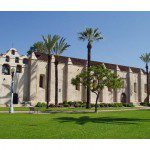
One of the arguments that Drs. Royal Skousen and, more recently Stanford Carmack are making in their remarkable work on the text of the Book of Mormon is that, in most if not all cases, what seems to be “bad” English (especially in the Original Manuscript) turns out to be English that was perfectly good at an earlier stage in the history of the English language – earlier than Joseph Smith’s day and, sometimes, considerably earlier than that.
Meanwhile, on this trip, I’ve been slowly reading through Changes in Languages from Nephi to Now, the intriguing new book from Brian D. Stubbs.
In passing, although he’s making no connection to either them or their argument, he provides a nice example of the sort of thing they’re talking about. Perhaps it will help some people to understand Skousen and Carmack’s point:
English is a hybrid language, based on the Germanic tongue of Old English but with – to simplify things considerably – a vast and decisive admixture of, particularly, Latin and Norman French.
I sometimes like to illustrate this mixed character with paired terms. For example, the upper class Latinate manual is a precise equivalent to the sturdy Germanic peasant handbook. Or God and godly, paired with Deity and divine. Or Holy Ghost and Holy Spirit, reflecting German Geist (= spirit) and Latin spiritus. And so forth.
Such double-layering is one of the elements that gives English its unique richness and flexibility.
But it’s also left historical fossils that sometimes create “problems” for English speakers and English learners. Here’s the example from Brian Stubbs to which I referred:
In much earlier and more Germanic English, the past tense of the verb to climb was clomb. With the passing of time, though, the past tense became climbed, and clomb (or, as it’s sometimes said in the American Midwest, climb; as in I clumb a tree today) dropped out of educated speech and far out of formal writing. Today, clumb is often regarded as hick talk – which probably reflects the way Norman aristocrats viewed Anglo-Saxon peasants – but it’s actually older than climbed. And, of course, while the change from clomb to climbed was underway, before the new form had become dominant, it would have been the innovators, the folks using climbed rather than clomb/clumb, who were “wrong.”
Posted from Røisheim, near Lom, Norway










